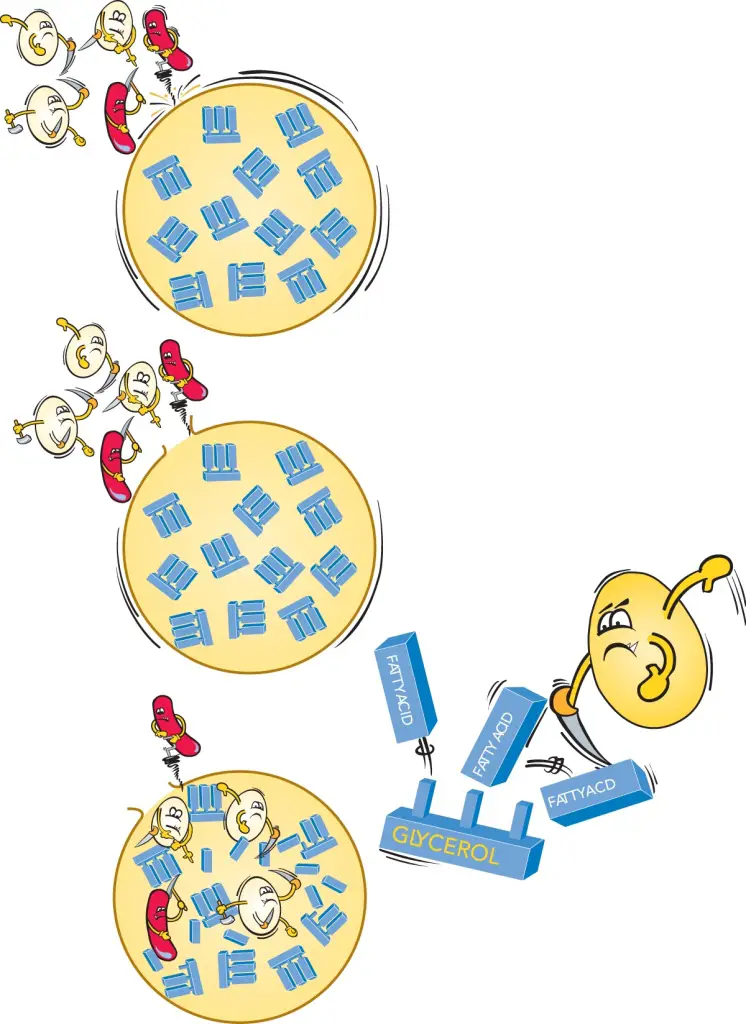The AIFST, as the professional association for food scientists and food technologists in Australia, has many awards available for its members. One of these for young members (under 30 years of age) is the John Christian Young Food Microbiologist award. In 2006, a few months before my 30th birthday, I submitted the below 500 word summary of an aspect of my PhD research I was undertaking at the time, as a collaboration between Food Science Australia (CSIRO), The University of Melbourne and The University of Queensland. By the way, I was not selected as a finalist for this award.
Spoilage can occur in milk by a variety of different means. Pasteurised milk is most often spoiled due to microbial growth whereas enzymatic spoilage predominates in UHT milk. This is due to the heat treatments applied. Pasteurisation conditions are typically heating at 72 °C for 15 sec while UHT treatment conditions are approximately 140 °C for 4 sec. This variation in heat treatment results in a commercially sterile product (UHT milk) and a product in which pathogens have been eliminated but spoilage microbes still exist (pasteurized milk). As microbes are longer present in UHT milk, spoilage takes place due to other mechanisms. Lipase is naturally present in raw milk or can also result from bacterial growth. UHT processing doesn’t inactivate bacterial lipase, the action of which in UHT milk, can result in lipolytic rancidity. This takes place when the lipase catalyses the reaction resulting in release of a fatty acid from a mono-, di- or triacylglycerol molecule. Thus, free fatty acids (FFAs) result along with a glycerol molecule (Figure 1). Combinations of particular FFAs, when present at certain concentrations in UHT milk, can impart characteristic flavours. These flavours are perceived as off-flavours, and when this has occurred, he product has spoiled and therefore, reached the end of its shelf-life.
The most common methods in use for measurement of FFAs are the extraction-titration techniques (Deeth, 1993). Examples are the method of Salih et al. (1977) and that described by Deeth et al. (1975), which was used in this experiment. Salih et al. (1977) mentions that recovering a high percentage of hydrophilic short-chain FFAs without extracting other hydrophilic acids can be a problem. IDF (1991) has compared the percentage recovery of individual FFAs and found that the procedure described by Salih et al. (1977) is superior to the Deeth et al. (1975) method in this regard. Although improved results are expected, the technique is tedious and time-consuming. This would be a reason to favour the Deeth et al. (1975) method over that of Salih et al. (1977). Other methods which have been reported include spectrophometric methods. For example, those based on the conversion of the FFAs to copper soaps, with subsequent extraction and then reaction with a colorimetric reagent for detection at 440 nm (Shipe et al., 1980). This method has been modified more recently for detection of FFAs resulting from lipolytic activity of bacteria growing in a model broth system with various lipid sources as lipase substrate (Leuschner et al., 1997).
For detailed analysis of the specific FFAs present in milk, gas chromatography (GC) methods are widely used. These methods can be used for underivatised (de Jong & Badings, 1990; Wijesundera & Drury, 1999; Cardak et al., 2003) or derivatised (Ulberth & Schrammel, 1995; Wiking et al., 2003; Silva et al., 2005) FFAs, which are usually free fatty acid methyl esters (FAMEs), although Rosenfeld (2002) discusses various options for derivatisation of FFAs. A new alternative method unrelated to extraction-titration or GC is based on the use of fourier transform infra red (FT-IR) techniques (Pedersen, 2004).
References
Cardak, A.D., Yetismeyen, A. & Bruckner, H. (2003). Quantitative comparison of free fatty acids in camel, goat and cow milk. Milchwissenschaft 58 : 127-130.
Deeth, H.C. (1993). Lipase activity and its effect on milk quality. The Australian Journal of Dairy Technology 48 : 96-98.
Deeth, H.C., and Fitz-Gerald, C.H. & Wood, A.F. (1975). A convenient method for determining the extent of lipolysis in milk. The Australian Journal of Dairy Technology 30 : 109-111.
De Jong, C. & Badings, H.T. (1990). Determination of free fatty acids in milk and cheese. Journal of High Resolution Chromatography 13 : 94-98.
IDF (1991). Considerations for selecting a method (Determination of free fatty acids in milk & milk products). Bulletin of the International Dairy Federation 265 : 19-25.
Leuschner, R.G., Kenneally, P.M. & Arendt, E.K. (1997). Method for the rapid quantitative detection of lipolytic activity among food fermenting microorganisms. International Journal of Food Microbiology 37 : 237-240.
Pedersen, D.K. (2004). Determination of casein and free fatty acids in milk by means of FT-IR techniques. Bulletin of the International Dairy Federation 383 : 48-51.
Rosenfeld, J.M. (2002). Application of analytical derivatizations to the quantitative and qualitative determination of fatty acids. Analytica Chimica Acta 465 : 93-100.
Salih, A.M.A., Anderson, M. & Tuckley, B. (1977). The determination of short- and long-chain free fatty acids in milk. Journal of Dairy Research 44 : 601-605.
Shipe, W.F., Senyk, G.F. & Fountain, K.B. (1980). Modified copper soap solvent extraction method for measuring free fatty acids in milk. Journal of Dairy Science 63 : 193-198.
Silva, M.H.L., Silva, M.T.C., Brandao, S.C.C., Gomes, J.C., Peternelli, L.A. & Franceschini, S. do C.C. (2005). Fatty acid composition of mature breast milk in Brazilian women. Food Chemistry 93 : 297-303.
Ulberth, F. & Schrammel, F. (1995). Accurate quantitation of short-, medium- and long chain fatty acid methyl esters by split-injection capillary gas-liquid chromatography. Journal of Chromatography A 704 : 455-463.
Wijesundera, C. & Drury, L. (1999). Role of milk fat in production of cheddar cheese flavour using a fat-substituted cheese model. The Australia Journal of Dairy Technology 54 : 28-35.
Wiking, L., Bjorck, L. & Nielsen, J.H. (2003). Influence of feed composition on stability of fat globules during pumping of raw milk. International Dairy Journal 13 : 797-803.


